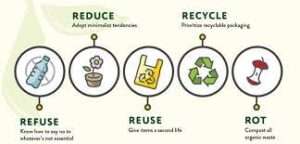Forex Markets and the Global Transition to Circular Economies
Introduction
Understanding Circular Economies
Forex Markets and Their Role
Forex markets, short for foreign exchange markets, serve as the lifeblood of the global economy, playing a pivotal role in facilitating international trade and finance. These markets are a dynamic arena where currencies from different countries are bought and sold, determining exchange rates that influence the value of these currencies in relation to one another. Understanding the significance of forex markets is crucial in comprehending the mechanics of our interconnected world.
Importance in Global Trade and Finance:
Forex markets are the backbone of international trade, enabling countries to engage in commerce beyond their borders. They are essential for several reasons:
- Exchange of Currencies: When nations trade with one another, they often use different currencies. Forex markets provide a platform for converting one currency into another, ensuring smooth cross-border transactions.
- Determining Exchange Rates: Exchange rates, the prices at which one currency can be exchanged for another, are the heart of forex markets. These rates influence the cost of imported and exported goods, impacting trade competitiveness and economic stability.
- Hedging and Risk Management: Businesses and investors use forex markets to manage currency risk. By engaging in currency hedging, they can protect themselves from adverse exchange rate movements that could erode profits.
How Forex Markets Work:
Forex markets operate 24 hours a day, five days a week, making them one of the most liquid and accessible financial markets globally. The key elements of how they function include:
- Currency Pairs: Forex trading involves currency pairs, where one currency is exchanged for another. Major currency pairs include EUR/USD (Euro/US Dollar), GBP/JPY (British Pound/Japanese Yen), and many more. Each pair represents the exchange rate between two currencies.
- Bid and Ask Prices: Forex traders can buy (go long) or sell (go short) a currency pair. The bid price represents the maximum price a buyer is willing to pay, while the ask price is the minimum price a seller is willing to accept.
- Leverage: Forex trading often involves the use of leverage, which allows traders to control larger positions with a relatively small amount of capital. While this can amplify profits, it also increases the potential for losses.
Link Between Forex Markets and International Trade:
The relationship between forex markets and international trade is symbiotic. Exchange rates determined in forex markets significantly impact international trade dynamics:
- Import Costs: A weaker domestic currency can make imports more expensive, impacting the cost of goods brought into a country. A strong domestic currency, on the other hand, can lower import costs.
- Export Competitiveness: A weaker domestic currency can enhance a country’s export competitiveness, as its goods become more attractively priced for foreign buyers. Conversely, a strong domestic currency can make exports more expensive.
- Trade Balances: Exchange rates influence a country’s trade balance, as they affect the value of exports and imports. Trade deficits and surpluses can be influenced by shifts in currency values.
In essence, forex markets serve as the vital mechanism that determines the value of currencies and, consequently, the terms of international trade. They are the financial linchpin connecting nations, businesses, and individuals in a globalized world, where economic activities transcend borders, and currency exchange is the conduit of commerce.
Economic Implications of Circular Economies on Forex Markets
The transition towards circular economies has profound economic implications that resonate within the forex markets, influencing currency values, market dynamics, and trade relationships. In this section, we will delve into the intricate web of connections between circular economy principles and forex markets, supported by real-world examples.
Impact of Sustainable Resource Use on Currency Values:
Circular economies prioritize sustainable resource use, reducing the over-exploitation of finite resources. This emphasis on responsible resource management can impact currency values in several ways:
- Resource-Dependent Economies: Countries heavily reliant on resource exports, such as oil or minerals, may experience fluctuations in their currency values as circular economy practices reduce demand for these finite resources. For instance, if global demand for fossil fuels decreases due to energy efficiency measures, it can impact the currency of a resource-dependent nation like Saudi Arabia.
- Investor Sentiment: Investors increasingly favor countries demonstrating commitment to sustainable practices. Currency values of nations with strong circular economy policies may strengthen as investors view them as more stable and resilient.
Effects of Waste Reduction Policies on Forex Market Dynamics:
Circular economies emphasize waste reduction through recycling and minimizing waste generation. This can have significant implications for forex markets:
- Cost Reduction and Competitiveness: Companies operating in countries with robust waste reduction policies may enjoy lower disposal costs, making their products more competitive on the global market. As a result, demand for their currency may increase.
- Investor Confidence: Waste reduction policies signal a commitment to sustainability, attracting foreign investments. Forex markets may react positively to increased foreign capital inflows, potentially strengthening the nation’s currency.
Influence of Changes in Industrial Production Patterns on Exchange Rates:
Circular economy practices often lead to changes in industrial production patterns, which can ripple through forex markets:
- Transition to Sustainable Technologies: Countries at the forefront of adopting sustainable production technologies, such as renewable energy or eco-friendly manufacturing processes, may see increased investor interest and a stronger currency.
- Impact on Export-Import Dynamics: Shifts in production patterns can affect a nation’s balance of trade, influencing the supply and demand for its currency. For example, a country emphasizing green technology exports may see an uptick in demand for its currency from importing nations.
Real-World Examples of Forex Market Changes:
To illustrate these concepts, consider real-world examples:
- Germany’s Circular Economy Leadership: Germany, known for its strong circular economy initiatives, has seen its currency, the euro (EUR), benefit from investor confidence and sustainable production practices. The country’s emphasis on renewable energy and recycling has positioned it favorably in the forex market.
- China’s Green Manufacturing: China’s efforts to transition towards greener manufacturing practices have impacted the exchange rate of the Chinese yuan (CNY). As the world’s largest producer, changes in China’s industrial production patterns reverberate through forex markets, influencing its currency’s value.
In summary, the economic implications of circular economies on forex markets are multifaceted and interconnected. Sustainable resource use, waste reduction policies, and changes in industrial production patterns can all influence exchange rates, reflecting the growing importance of environmental and sustainability factors in global financial markets.
Challenges and Risks
Opportunities and Benefits

Conclusion
FAQs
What is a circular economy, and how does it differ from a linear economy?
- A circular economy is an economic system that prioritizes sustainable resource use, waste reduction, and recycling. It differs from a linear economy, which follows a ‘take-make-dispose’ model, as it aims to minimize waste and maximize resource efficiency.
2. How do forex markets work?
- Forex markets are decentralized, over-the-counter markets where currencies are exchanged. Exchange rates, representing the relative value of one currency against another, are determined by market supply and demand. Forex markets operate 24/5, enabling continuous trading across global time zones.
3. What is the link between forex markets and international trade?
- Forex markets are crucial for international trade as they facilitate currency exchange, enabling cross-border transactions. Exchange rates impact the cost of imported goods, competitiveness of export-oriented industries, and overall trade balances.
4. What economic implications do circular economies have on forex markets?
- Circular economies impact forex markets by influencing sustainable resource use, waste reduction policies, and changes in industrial production patterns, all of which can affect currency values and market dynamics.
5. How does sustainable resource use affect currency values?
- Sustainable resource use can lead to currency stability by reducing resource price volatility and attracting foreign investment in green industries.
6. What effects do waste reduction policies have on forex market dynamics?
- Waste reduction policies can influence currency values by reducing production costs, enhancing brand reputation, and attracting investment in businesses that adopt sustainable practices.
7. How can changes in industrial production patterns influence exchange rates?
- Changes in industrial production patterns can impact exchange rates by affecting trade balances and the competitiveness of industries, leading to shifts in currency values.
8. Can you provide real-world examples of countries affected by forex market changes due to circular economy initiatives?
- Examples include Sweden’s strong krona due to recycling policies, the euro’s resilience tied to the EU’s circular economy initiatives, and Japan’s yen stability in electronics recycling.
9. What challenges and risks are associated with the transition to circular economies?
- Challenges include industry disruption, resource scarcity, regulatory hurdles, and technological adoption. These challenges can affect forex markets by causing currency fluctuations in affected regions.
10. What are the opportunities and benefits of embracing circular economies for investors and businesses? Opportunities include innovation, cost savings, and enhanced brand reputation. Economic benefits encompass reduced environmental impact, job creation, and energy/resource security. Industries poised to benefit include renewable energy, electronics, fashion, construction, and waste management.
Read more on Circular Economy



